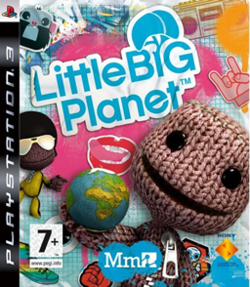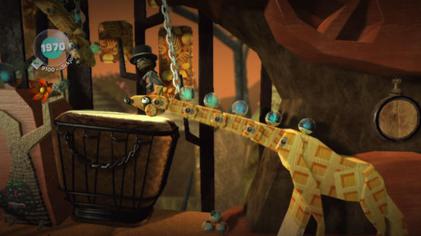Labels: Innovation, online community
In an age when video games are differentiated by specifics such as HD graphic resolution, Sony sought to take a step backwards and develop a product with broad enough appeal to attract as many consumers as possible. This challenge, however, did not rely on piecing together the ultimate gamer market segmentation report. Rather, Sony needed to create an approach that did this groundwork for them, fast. The Wii gamer segment, where users are personalizing their machines and game profiles to interact with an online community, is growing steadily and, most recently, out-sold Sony's PS3 over 4 to 1 (http://www.1up.com/do/newsStory?cId=3171305). Further, video game production costs, 3 years ago, ranged between $3 million and $6 million (http://news.bbc.co.uk/1/hi/technology/4442346.stm). Estimates today place costs upwards of $20 million. New video games, thus, need relatively strong ROI.
So, t hen, how might Sony safely reach as many customers as possible? Meet LittleBigPlanet. LBP is a world where gamers guide 'Sack puppets' through any challenges made available to them. These 'Sack people' range from being entirely new to resembling characters from various other popular games. And, of course, they can be customized.
hen, how might Sony safely reach as many customers as possible? Meet LittleBigPlanet. LBP is a world where gamers guide 'Sack puppets' through any challenges made available to them. These 'Sack people' range from being entirely new to resembling characters from various other popular games. And, of course, they can be customized. But Sony did not stop at this simple functionality, which is found in a majority of today's games. LBP is a semi-open game platform in the form of a developer's kit. Players can build their own worlds quickly, customized however they please. These worlds can then be shared online amongst the PS3 LBP community. Appropriately, LittleBigWorkshop's catch phrase is Play. Create. Share.
But Sony did not stop at this simple functionality, which is found in a majority of today's games. LBP is a semi-open game platform in the form of a developer's kit. Players can build their own worlds quickly, customized however they please. These worlds can then be shared online amongst the PS3 LBP community. Appropriately, LittleBigWorkshop's catch phrase is Play. Create. Share.
While there were 50 pre-built levels included with the game, Sony looks to the community of LBP gamers to create worlds of play applicable to their demographic or something to which their segment is emotionally tied. For example, there is an up-cropping of worlds resembling the early Mario Brothers games. This  externalization of NPD (albeit partial because gamers do not truly create an entirely new product) is apparently a fun process for the user and results in a products personalized to a broad spectrum of segments. This is not the first game to provide this capability; level building dates back to at least 1991 in a game by Epic called ZZT (http://blog.wired.com/games/2008/10/first-impressio.html). However, this does represent a shift towards NPD via social media, where gamers add value to their own community through co-creation. The result thus far, though muddled by the current recession, is reasonably good. After its launch completed early this November, LBP's sales placed it in the top 10 titles for October with only a few day's worth of availabilty accounting for that ranking (http://www.1up.com/do/newsStory?cId=3171305).
externalization of NPD (albeit partial because gamers do not truly create an entirely new product) is apparently a fun process for the user and results in a products personalized to a broad spectrum of segments. This is not the first game to provide this capability; level building dates back to at least 1991 in a game by Epic called ZZT (http://blog.wired.com/games/2008/10/first-impressio.html). However, this does represent a shift towards NPD via social media, where gamers add value to their own community through co-creation. The result thus far, though muddled by the current recession, is reasonably good. After its launch completed early this November, LBP's sales placed it in the top 10 titles for October with only a few day's worth of availabilty accounting for that ranking (http://www.1up.com/do/newsStory?cId=3171305).
Another interesting and, perhaps, more poignant insight is that this same approach and capability, including all the community communication elements, were available for PC games decades ago. Sony's LBP model is hardly a new concept for innovation. Yet, perhaps users were not yet conditioned to develop and share as readily as they are today.